With services being held online, Budapest’s churches can now only be admired from outside. Here we select six of the most attractive temples around the city, chosen because of their atmosphere, elegance and special architectural solutions.
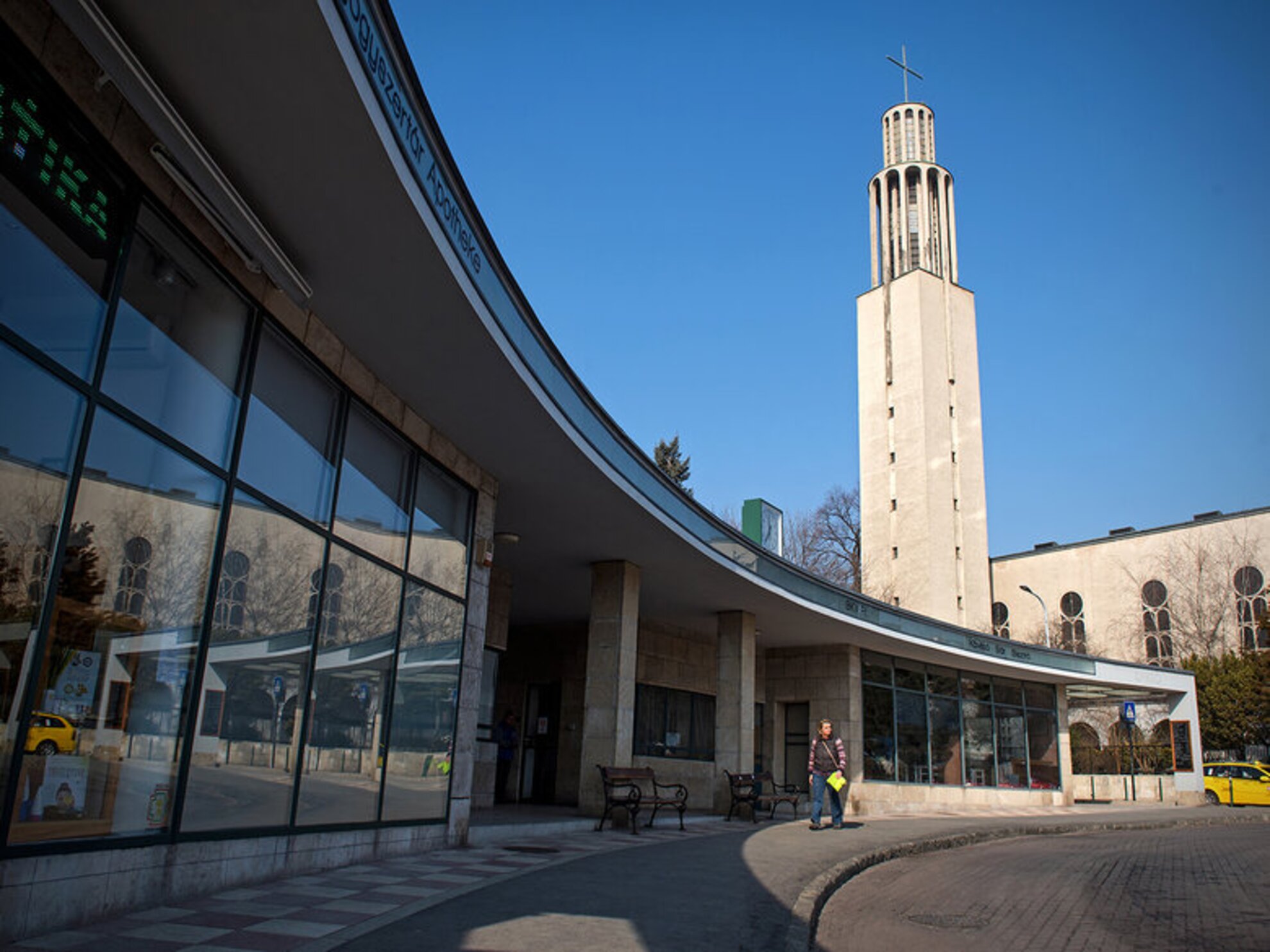
The sight of the 46-metre-high bell tower of the Church of St Anthony of Padua beckons over the roof of the semi-circular Pasarét bus terminal, with the green expanse of Hunyad-orom and János Hill in the background. In the first half of the 20th century, Bauhaus-style villas (including the stand-out Napraforgó utca estate) were built, row upon row, in the leafy district of Pasarét, and churches were no exception. Even modern forms and materials such as reinforced concrete were used, harder to express in more elegant architectural terms. Architect Gyula Rimanóczy had no easy task in conceiving his plans either, but his church was consecrated in 1934, with a relief of St Francis and St Anthony on its façade, a hall-like, beautifully lit interior and stained-glass windows by Lili Sztehlo Árkayné. In 1938, the bus terminal was completed next to it, also following a design by Rimanóczy.

Another, even more famous example of modern ecclesiastical architecture is the Heart of Jesus Parish Church on the edge of Városmajor. Its tower is clearly visible from almost all parts of Buda and its compact structure is fantastically counterbalanced by stained-glass windows above the sanctuary (also by Árkayné Sztehlo Lili). The work of Aladár Árkay, consecrated in 1933, the first modern reinforced-concrete church in Budapest, also caused great outrage among conservatives, and was ridiculed as God’s garage in Városmajor. He designed the building together with his son, Bertalan, signifying a quiet revolution in architecture, but didn’t stay alive long enough to witness its consecration. Surprisingly, even in the spacious nave, houseplants enrich the interior. In 1942, a bomb attack hit the now-listed church, and the outline of the impact resembles a statue of the Virgin Mary.
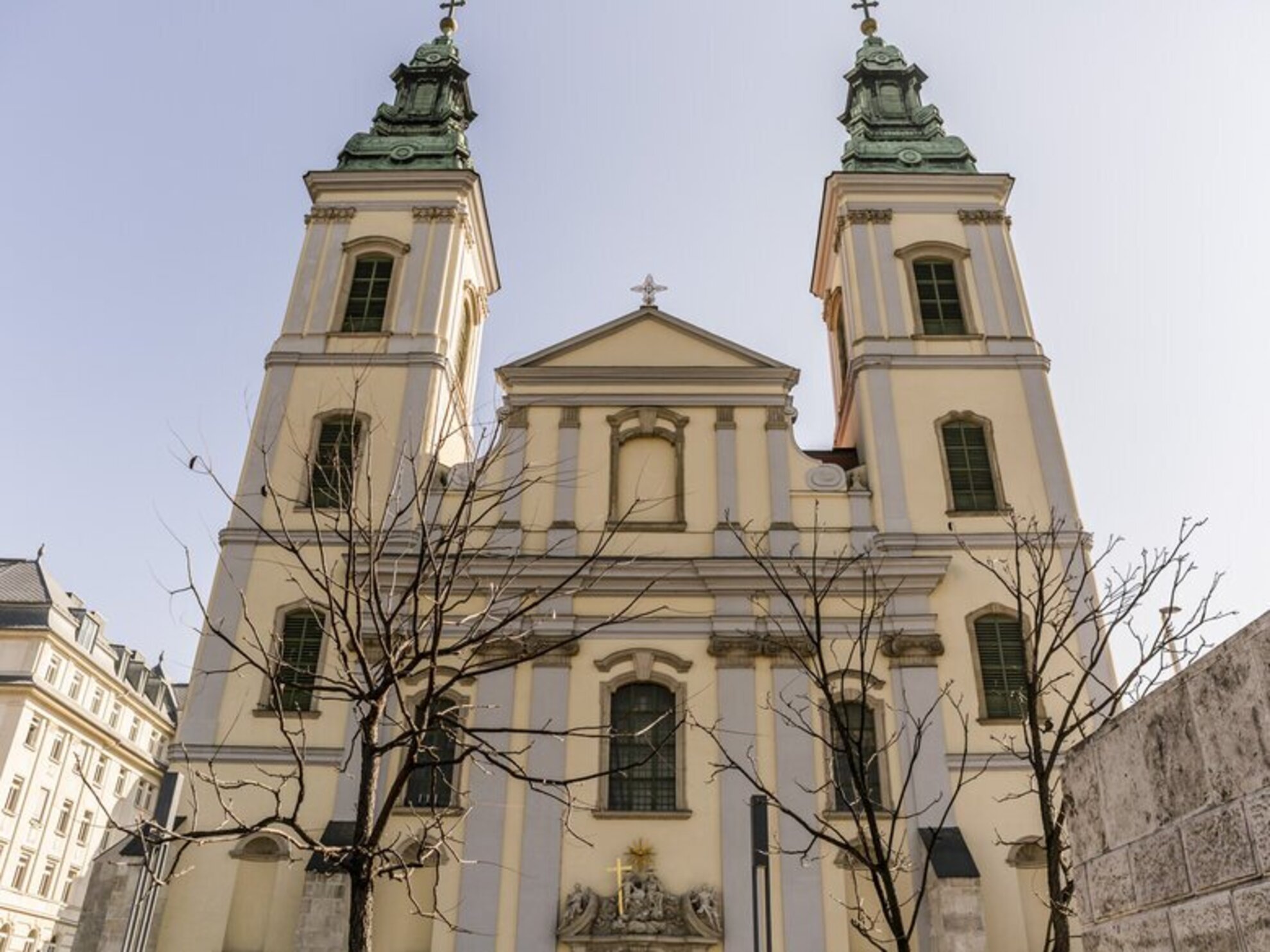
According to legend, the city’s (formerly) only 24-hour church had to be pushed to one side during the construction of Elizabeth Bridge, but this is not the only strange thing about its architecture: one of the oldest and richest historical buildings in Budapest has been redesigned 14 times. The crypt of the 2,000-year-old building has been open to the public since 2017 and can be seen through the glass floor – it goes all the way back to Roman times, as the first church was erected on the walls of a former garrison in the 11th century. Below, you can also see an exhibition of archaeological excavations, the new chapel serving as a community and prayer space, and the Proberger crypt, built in 1699, in which 19th-century aristocrats rest, as well as Bishop Gellért (as in Gellért Hill). It was later used by the Turks as a mosque, and rebuilt by King Sigismund and Matthias. The structure you see today dates back to the 16th century, with Baroque touches added after an 18th-century fire. It was later restored by architectural giant Imre Steindl, who designed Parliament.
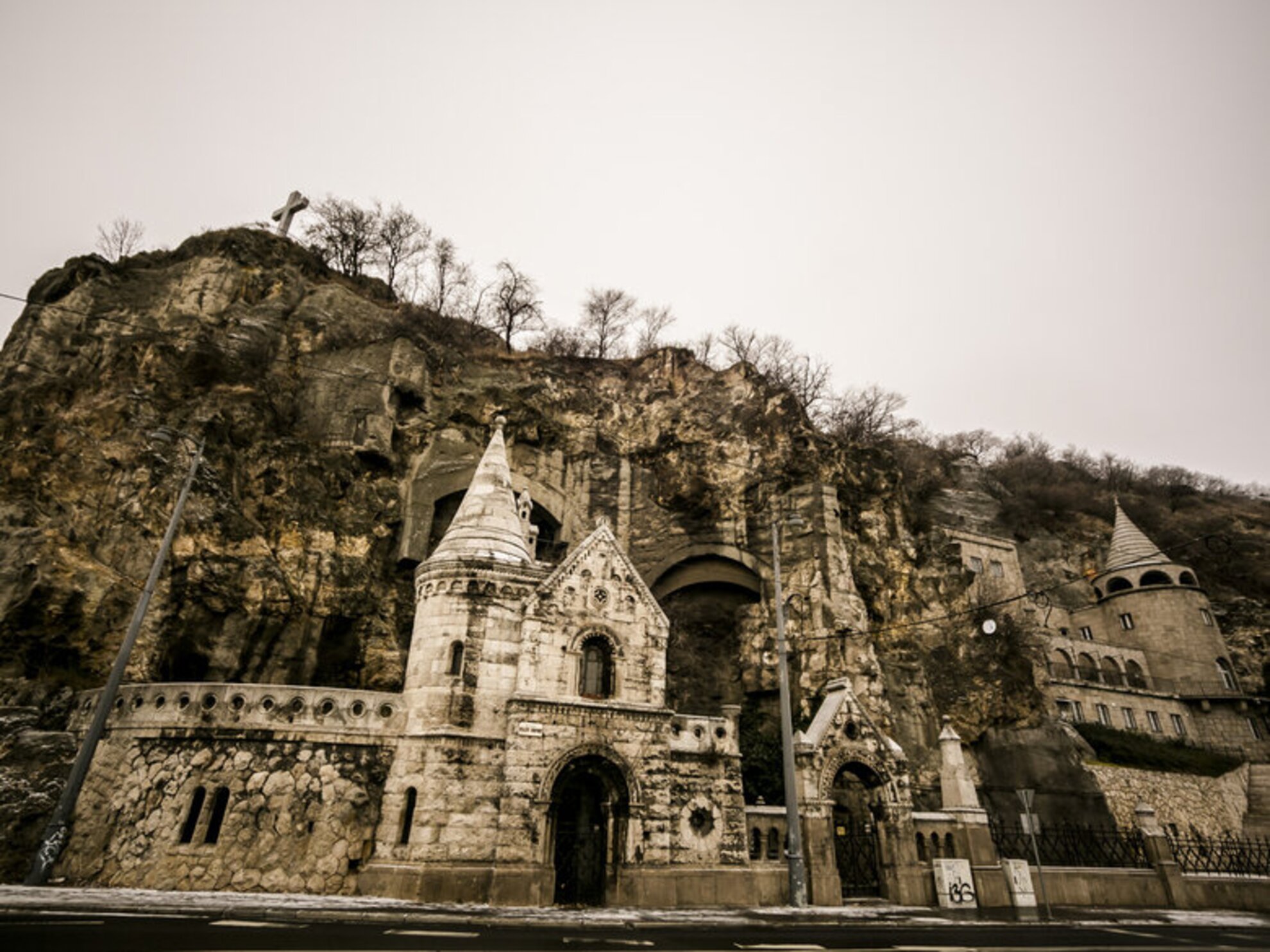
The Cave Church of Our Lady of Hungary is the most unusual in Budapest and belongs to the only Hungarian-founded order of monks, the Paulines. The order was dissolved by Joseph II in 1786 together with several others. The monks only returned home in 1934, when the Cave Monastery was built for them on the Danube side of Gellért Hill, and the cavity formed by a natural cave became a church. The idea came from Hungarian pilgrims visiting the Virgin of Lourdes in 1924, and they wanted to build a domestic version of the shrine here. Under Communism, the monks were taken away, the church was closed, the monastery later became a dormitory of the State Ballet Institute, and it was not reopened until 1989. Between steep cliffs, they not only hold masses but also act as a visitor centre, preserving one of the most valuable relics of the Pauline Order, St Paul the Hermit’s shin.
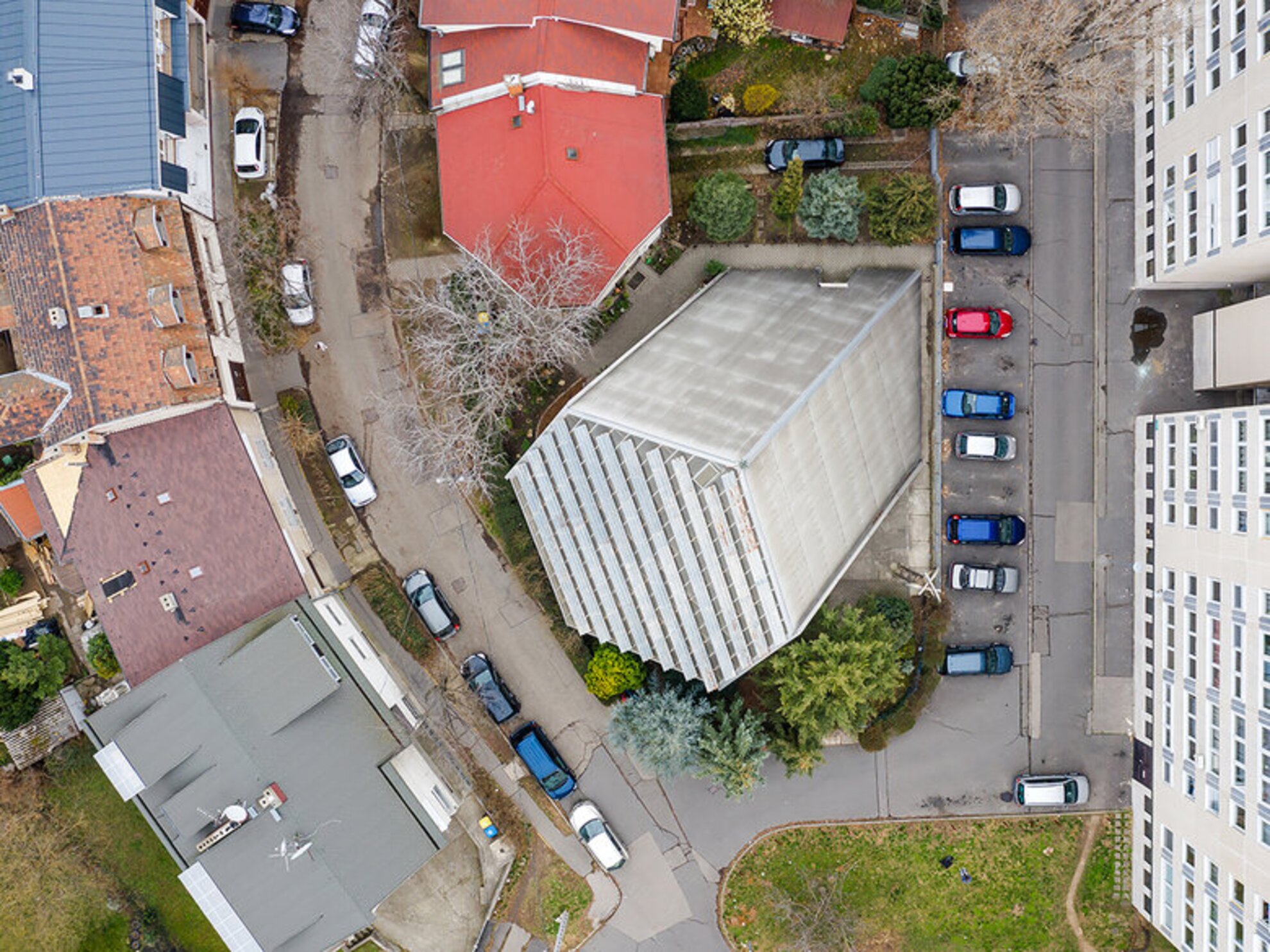
...or the ‘crashed Kelenföld UFO’, where the communal housing blocks meet the garden city. Perhaps the strangest church in Budapest, covered with a lattice, with a hexagonal floor plan tilted at an angle of 45°, seems to have its whole body facing the sky. Its unusual form and architectural solutions were brought to life by necessity and the ingenuity of the architect: its designer was István Szabó, who was at the forefront of church construction in the post-war Kádár era, not shunned but barely tolerated. He was a master of the great halls and exhibition pavilions, of which the square grid of the church is also reminiscent. The roof of the church, built between 1979-81, was covered with shaded polycarbonate boards, which gives a pleasant light to the interior. The bell tower is also extravagant, in Zsuzsa Bartha’s sculpture made of bent tubes, concealing the bells that work electronically.
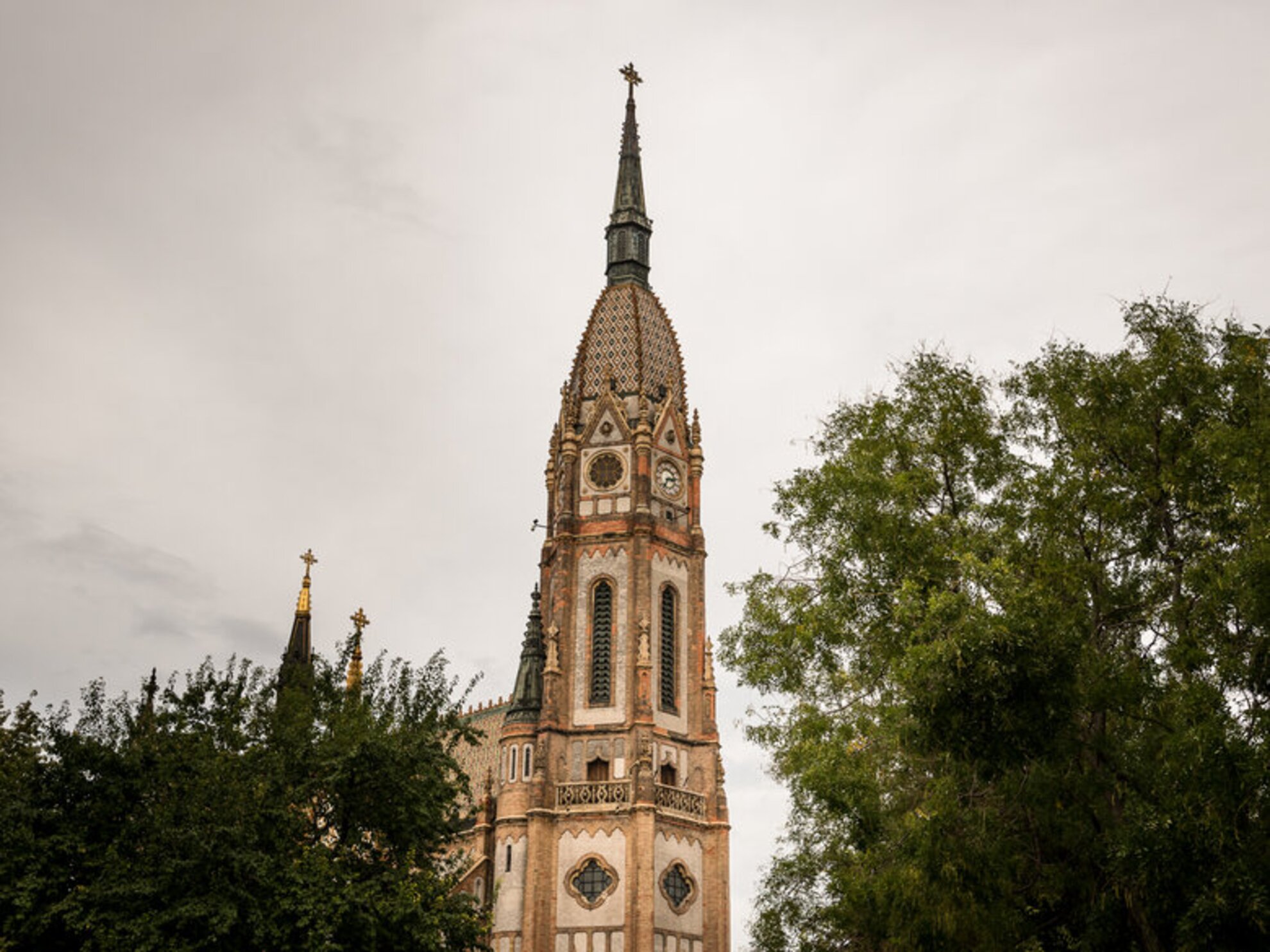
A notable attraction in Kőbánya is the Church of Szent László on the main square next to the row of cellars, with the second tallest church tower in Budapest at 83 metres – only St Stephen’s Basilica is higher. This magnificent and detailed church was built between 1894 and 1899, worked on by the best craftsmen and designers of the age: Ödön Lechner, the Grand Master of Hungarian Art Nouveau architecture, designed it in an eclectic-Art Nouveau style, combining Romanesque, Gothic, Renaissance, Baroque, Persian and Hungarian folk styles. Originally, he wanted to make use of more Oriental-Byzantine influences, but he had to surpress them because of the resistance of the day. He could only fulfil his desires with a few motifs, in the bronze door decorations of the entrance and in the domed structures above the main altar. The most dazzling parts of the interior are the Zsolnay majolica altars, built by Vilmos Zsolnay, together with the pulpit and other ornamental-figural ornaments. Outstanding among all of these is the main altar, whose altarpiece depicting Szent László is the work of Ignác Roskovich, a renowned ecclesiastical painter of the day.




